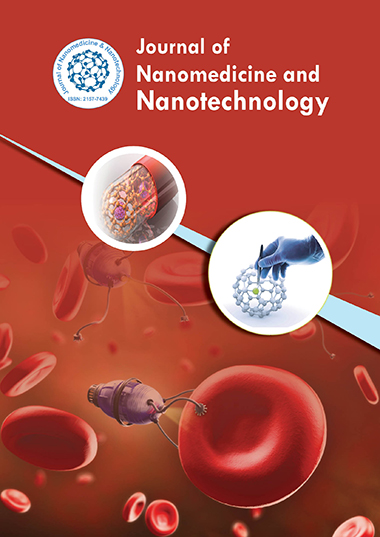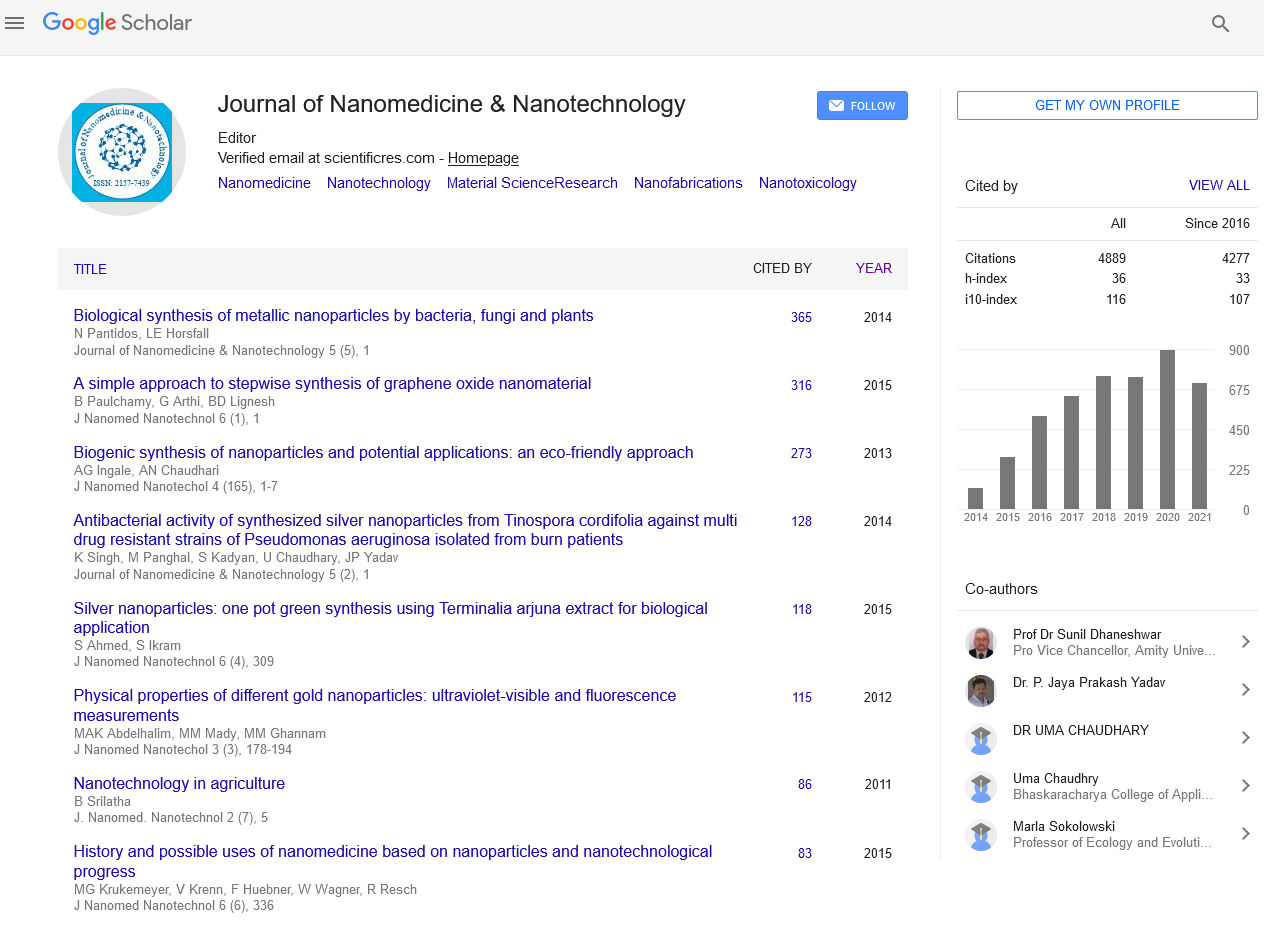Indexed In
- Open J Gate
- Genamics JournalSeek
- Academic Keys
- JournalTOCs
- ResearchBible
- China National Knowledge Infrastructure (CNKI)
- Scimago
- Ulrich's Periodicals Directory
- Electronic Journals Library
- RefSeek
- Hamdard University
- EBSCO A-Z
- OCLC- WorldCat
- SWB online catalog
- Virtual Library of Biology (vifabio)
- Publons
- MIAR
- Scientific Indexing Services (SIS)
- Euro Pub
- Google Scholar
Useful Links
Share This Page
Journal Flyer

Open Access Journals
- Agri and Aquaculture
- Biochemistry
- Bioinformatics & Systems Biology
- Business & Management
- Chemistry
- Clinical Sciences
- Engineering
- Food & Nutrition
- General Science
- Genetics & Molecular Biology
- Immunology & Microbiology
- Medical Sciences
- Neuroscience & Psychology
- Nursing & Health Care
- Pharmaceutical Sciences
CuAu co-deposited modification on SPGE for enhanced non-enzymatic glucose detection
31st International Conference on Advanced Materials, Nanotechnology and Engineering
April 09-10, 2025 | Webinar
Dr. Jidsucha Darayen
Thammasat University, Thailand
Scientific Tracks Abstracts: J Nanomed Nanotechnol
Abstract:
The development of non-enzymatic glucose sensors is essential for achieving high stability, cost-effectiveness, and longterm reliability. This study presents a CuAu electrode fabricated by direct co- electrodeposition on a screen-printed graphite electrode (SPGE) for glucose detection. The electrochemical performance of Cu, Au, and CuAu electrodes was evaluated, revealing that Cu alone exhibited negligible current, while Au generated 0.8 A, confirming its glucose detection capability. Notably, the CuAu co-deposited electrode showed the highest current response (1.6 A), surpassing both Cu and Au, highlighting a synergistic enhancement in glucose sensing performance. The improved sensitivity of the CuAu electrode is attributed to the synergistic effect between Cu and Au, enhancing electron transfer and catalytic activity. While previous studies have focused on Cu and Au individually, the co-electrodeposition method for glucose sensing remains unexplored. This work further investigates the sensor’s response to five different glucose concentrations (55 nM, 110 nM, 165 nM, 220 nM, 275 nM), demonstrating a clear correlation between glucose levels and current response. The simple, scalable, and cost-effective fabrication method used in this study offers a promising alternative for high-sensitivity glucose sensors. With its enhanced electrochemical response and practicality, the CuAu/SPGE electrode has significant potential for non- enzymatic glucose sensing in biomedical diagnostics and point-of-care monitoring
Biography :
Dr. Jidsucha Darayen is a lecturer in the Department of Chemical Engineering at Thammasat University, specializing in metallurgical and materials engineering, electrochemistry, and catalysis. She earned her B.Sc., M.Sc., and Ph.D. from Chulalongkorn University in Metallurgical and Materials Engineering and Nanoscience and Technology. Her research focuses on metal-based catalysts, electrochemical sensors, and sustainable material development. She has worked on Cu-based catalysts for carbon reduction, electrochemical deposition of functional coatings, and Cu-based biosensors. Additionally, she has contributed to the recycling of aluminum waste, activated carbon production, and advanced surface coatings, including Nickel-Tungsten (NiW) as an alternative to hard chrome. Dr. Darayen is committed to advancing electrocatalysis and sustainable materials for industrial and environmental applications, with a strong emphasis on sensor technology, energy materials, and waste valorization.


